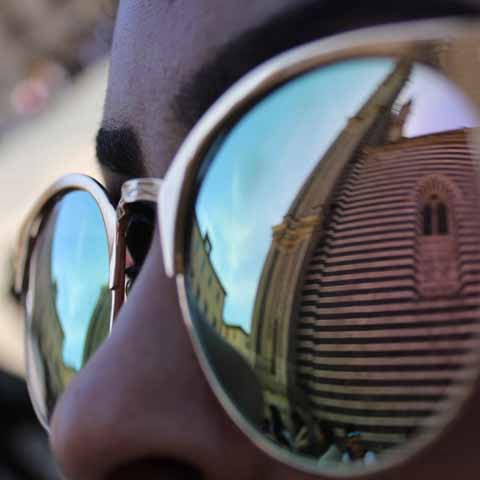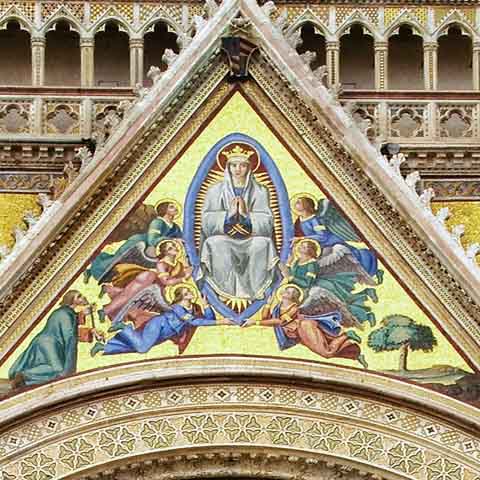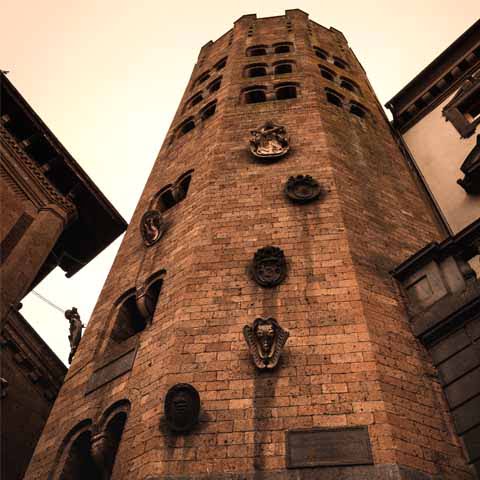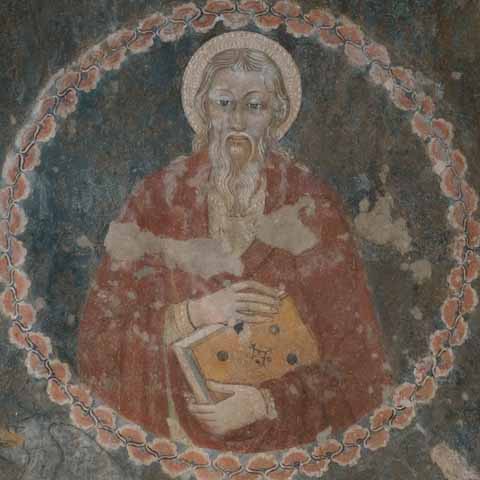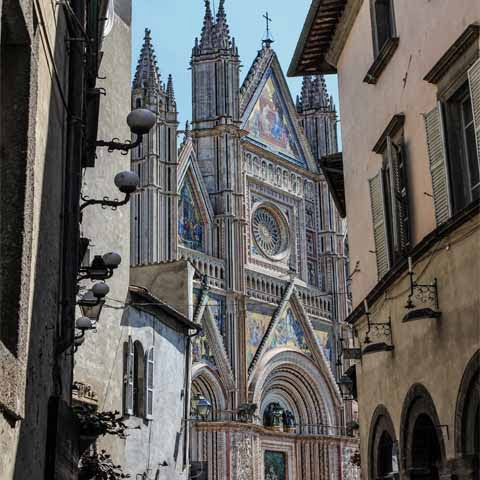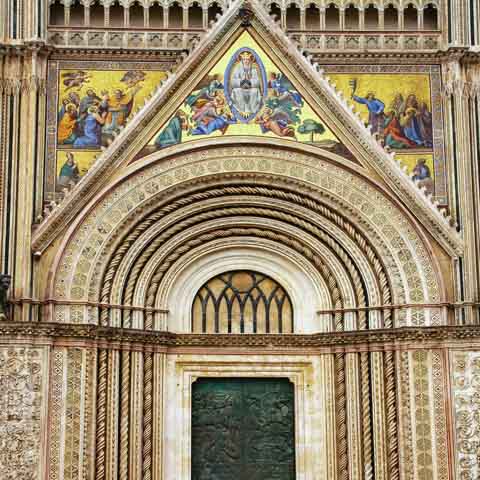Located approximately an hour and a half north of Rome and situated atop a butte of volcanic tuff rock, the city of Orvieto is a unique and fascinating place to visit, and makes for an enigmatic and novel stop that is sure to stand out on tours of the more commonly visited destinations in Italy. Located in the province of Terni in southwestern Umbria, with a population of less than 25,000 people, Orvieto has a history that dates back to well before the Roman Empire, to the time when the Etruscans were the dominant civilization on the Italian peninsula. With much of its historical artifacts and structures surprisingly well preserved, Orvieto stands as an incredibly important historical site that allows a glimpse into humanity’s distant past.
The town of Orvieto could be described as being divided into two districts. The newer, more modern Orvieto sits level with the rest of the surrounding countryside, situated below the rise of the volcanic butte.
The historical district of Orvieto rises proudly and majestically above the rest of the valley and is considered by many to be a must-see location that will stick out in one’s memory forever. Locals and visitors park their cars below the rise of the butte and take a footpath, escalator, or elevator up to the historical city, where they can enjoy the near complete lack of traffic, the narrow, winding historical streets, the churches, cathedral, old palaces, and the enigmatic caverns, catacombs, and labyrinths that wind beneath the surface of the town.
Orvieto features several prominent landmarks that are truly unique to the town. One of the most famous landmarks in Orvieto is the Duomo of Orvieto, also known as the Orvieto Cathedral. While there are many prominent cathedrals throughout Italy, the massive Orvieto Duomo stands out as being one of the most stunningly beautiful and keenly memorable. The cathedral features four prominent columns emerging from its front façade, all surrounded by statues, intricate windows and beautiful golden mosaics. And if one finds the outside of the building breathtaking, then visitors will get a delightful shock once they actually enter the cathedral. Inside the Duomo lies the Chapel of San Brizio. The chapel features some of the most striking and magnificent examples of Renaissance Italian art, created by Luca Signorelli, who is known to have inspired Michelangelo’s work on the Sistine Chapel. The Duomo of Orvieto stands out as one of the can’t-miss cathedrals on any tour of Italy for its distinctive architecture alone.
Of course, churches are not all that Orvieto has to offer. When visiting Orvieto one would be remiss if they were to ignore seeing the fascinating tunnel system and caverns carved below the town. Orvieto Sotterranea, or Orvieto Underground, allows visitors an in-depth look into the Etruscan era as they tour the old dwellings and streets of the subterranean city. The catacombs are incredibly well preserved, despite the earthquakes that have hit the region in the millenia since the Etruscans lived there, and this remains one of the most important Etruscan archaeological sites in the world. A guided tour through these catacombs will teach visitors about the ways the Etruscans lived, what their society was like, how they ate, and much more.
To top it all off, Orvieto is surrounded by truly stunning landscapes and nature. Within the city, travelers will find countless parks and green areas, while just outside the city are protected forests filled with pristine natural beauty. There are three protected areas in total near Orvieto as well as three important rivers, which are the Tiber River, the Chiani River, and the Paglia River. Truly, Orvieto is an amazing stop for hikers, trekkers, and nature lovers of all kinds.
GEOGRAPHY & CLIMATE
Orvieto is located only a short jaunt north of Rome in the valleys of the southwestern Umbria region. The town enjoys a warm climate, almost never dipping below freezing temperatures, even in the dead of winter, with summer temperatures averaging in the 80s Fahrenheit. The summers are usually rather dry, while rain tends to fall freely and heavily in the late fall and winter months.
The geography of Orvieto is incredibly unique. The surrounding area is mostly composed of lush green valleys, dotted with fields and vineyards for growing crops and grapes. The city itself, though, sits atop a butte formed from volcanic tuff rock. Tuff rock is created mostly from compressed and pressurized volcanic ash and is considered by geologists to be both sedimentary and igneous. It is a relatively soft rock, which is why it was perfect for the Etruscans of antiquity to tunnel into and build dwellings out of.
Visitors are encouraged to enjoy the surrounding countryside to better experience and understand the region’s traditions of winemaking, as well as taking a trip to experience the historical city atop the volcanic butte.
WHEN IN ORVIETO
While Orvieto is not a well-known destination in comparison to other Italian cities, there is truly a cornucopia of interesting things to see and do in this eccentric city. Visitors who plan an extended trip to Orvieto will be delighted by the sheer number of things to experience.
Travelers to Orvieto should, of course, not miss out on visiting the Duomo of Orvieto or Orvieto Sotterranea. Taking a guided tour of the underground area is an ideal way to see how the ancient Etruscans lived and is a favorite activity for visitors.
Other things one should be sure to do when visiting Orvieto include taking a guided tour of the historical city itself. There are many landmarks and interesting things to see along the narrow, winding streets of the town, and it is truly charming to walk down a historic street with little to no traffic, yet still feels lived in and inviting as residents and business owners carry on with their daily business. Visitors should consider taking a food and wine tour through the region, as the area surrounding Orvieto has long been famous for its history of wine making.
Other highlights include the Albornoz Fortress, which protected the town throughout the fifteenth century, the Abbey of Saints Severo and Martirio, and the Pozzo di San Patrizio well, which was constructed in the sixteenth century when the town’s water supplies were under threat from invaders. While the well is no longer needed for sustenance, visitors can actually descend the well these days and marvel at the carved, helix-structured spiraling staircases that allow the curious to delve into the deepest and darkest parts of the well.
Other places to visit in Orvieto include its multitude of museums, such as the Etruscan Museum, which houses many of the well-preserved Etruscan artifacts that have been recovered from the region. There is also the Museo Emilio Greco, which features a gallery of bronze sculptures created by Emilio Greco, the same artist and sculptor who designed the doors of the Duomo. And those who are interested in religious history can make a visit to the Museum dell’Opera del Duomo Orvieto, which houses a multitude of religious art and artifacts, including some truly ornate paintwork.
With everything that Orvieto has to offer, it is no wonder that many visitors make plans for their next trip before the first even ends. And thanks to Orvieto’s position between Rome and Florence, it’s feasible to visit this lesser-known city during a first-time trip to Italy.
Travel Guides
The Umbria Region of Italy
The Cities of Umbria, Italy
